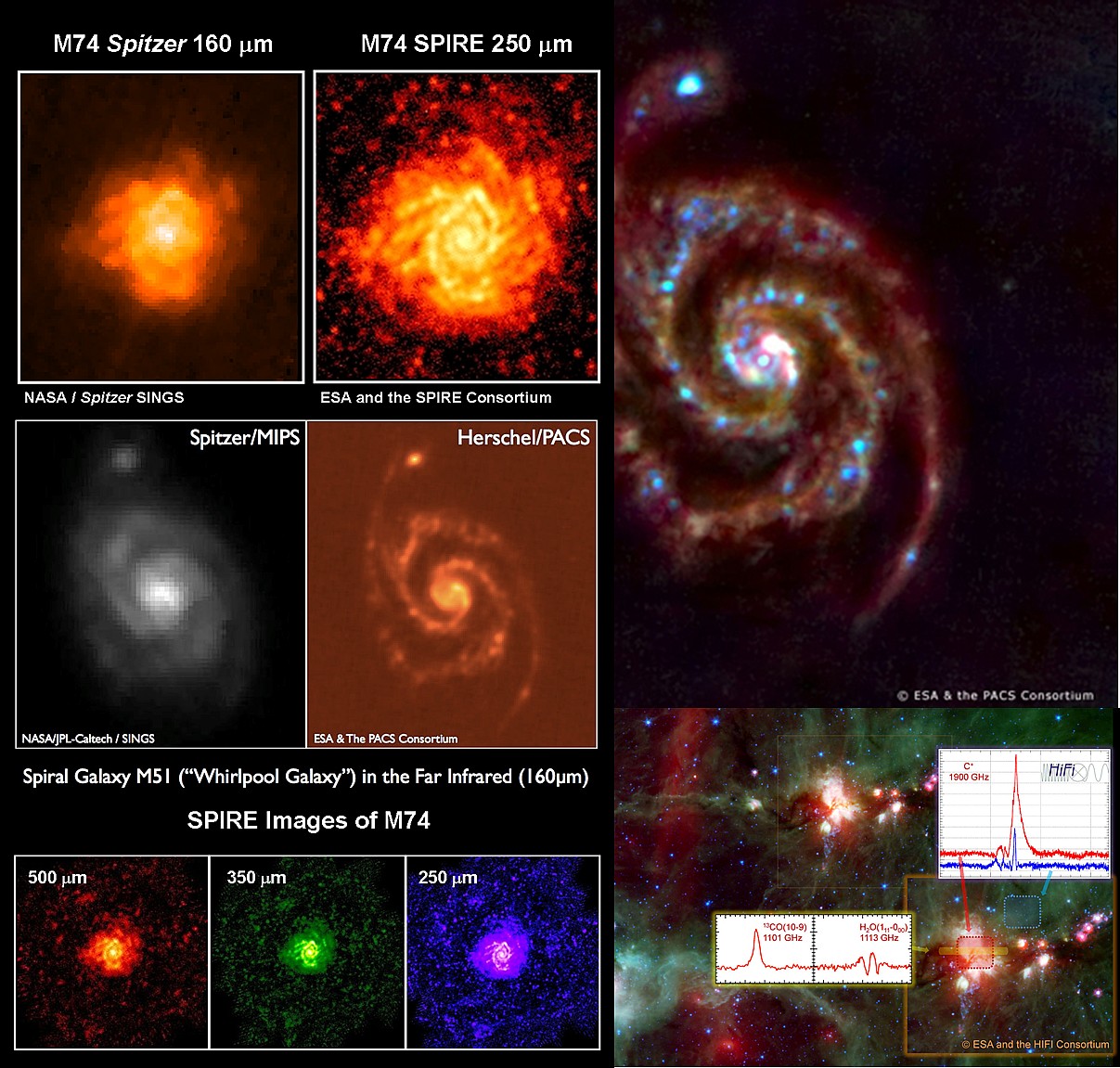Herschel sees its 'first-light'
- Chinese astronomers are taking part in its routine operations and scientific utilization
Herschel was successfully launched together with Planck on 14 May 2009 at Kourou, French Guiana. It is the fourth `Cornerstone' mission in the ESA’s Horizon2000 space science programme. With a 3.5 m Cassegrain telescope it was the largest space telescope ever launched. It will perform photometry and spectroscopy in the 55 - 672 µm wavelength range, bridging the gap between earlier infrared space missions and ground-based facilities.
Herschel is designed to observe the `cool universe'. It has the potential of elucidating formation of structures in the universe, resolving the far infrared cosmic background, revealing cosmologically evolving AGN/starburst symbiosis and galaxy evolution, unveiling the physics, chemistry, contents, and interaction of the interstellar medium and its molecular clouds that are the wombs of the stars, and unravelling the mechanisms governing the formation of and evolution of planetary systems, including our own solar system. In short, Herschel will open a new window to study how the universe has evolved to become the universe we see today, and how our star the sun, our planet the earth, and we ourselves fit in.
Herschel opened its eyes on 14 June 2009, precisely one month after the launch from Kourou, as the lid of cryostat was commanded to open. Testing observations were performed by all three instruments on-board. The nearby 'grand spiral' M51, called the 'Whirlpool Galaxy' was mapped by Herschel/PACS at all three photometric bands centered at 70, 100, and 160 µm. The SPIRE photometer performed broadband imaging at 250, 350, and 500 µm simultaneously, with Herschel targeted on two galaxies M66 and M74 that are located in a convenient part of the sky just to get a first impression of what SPIRE could see. Herschel's third instrument HIFI then pointed at the giant molecular cloud DR21 to get extremely high resolution spectral information on this well-known massive star forming region. The results from these test observations (refer to Figure) showed apparent sharpness and sensitivity, not only promptly confirmed Herschel’s excellent performance in its optics, instruments, and data processing system, but also presented astronomers promise as a powerful observatory.
The National Astronomical Observatory of the Chinese Academy of Sciences (NAOC) has been a partner of Herschel/SPIRE since September 2005. A team of NAOC engineers and scientists, directed by Prof. Maohai Huang, has made significant contribution to the development of the ground segment of Herschel and SPIRE. Profs. Huang and Jinzeng Li of NAOC became Associate Scientists of Herschel/SPIRE science team, and took part in two of the GT Key Projects “Gould Belt” (Probing the origin of the stellar initial mass function: A wide-field Herschel photometric survey of nearby star-forming cloud complexes) and “HOBYS” (Herschel imaging survey of OB Young Stellar objects) and one OT Key Project “Hi-GAL” (the Herschel infrared Galactic Plane Survey). Earlier this year NAOC and Herschel/SPIRE have agreed to continue collaboration for the full life time of Herschel, with Prof. Huang leading as a SPIRE co-investigator. The NAOC team in Beijing is currently busy taking part in the commissioning of Herschel as well as preparing scientific research in related Herschel programs. Several other groups in Chinese astronomical community are also actively exploring opportunities to take advantage of Herschel’s power.

NAOC team of Herschel/SPIRE
July 2009
|













